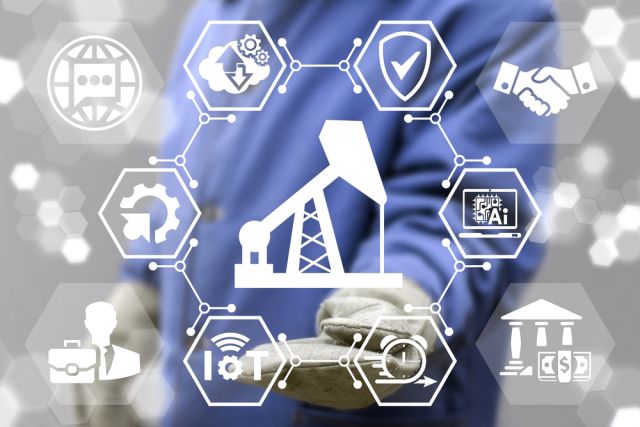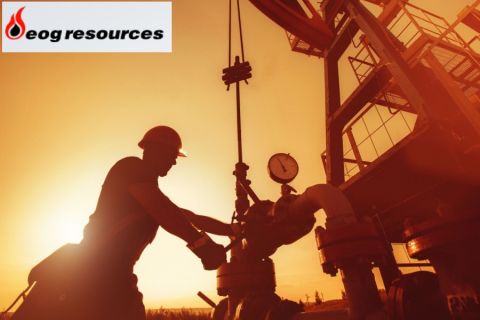
Companies that are using AI in the oilfield say there’s no turning back. (Source: Shutterstock)
AI presents so many possibilities for the oil and gas industry that figuring out where to start can be a daunting task. But companies that are using AI say there’s no turning back.
Now considered “table stakes,” AI is showing up in all manner of software solutions, experts said April 10 at the AI in Oil and Gas conference in Houston.
The experts take: AI solutions can help extract information from documents, and generative AI can make employees who aren’t data-savvy far more productive. AI can automate decisions in the field, drive up a well’s productivity and speed the testing and development process for new products.
When it comes to getting started with using AI and generative AI, Brad Chatham, Appian’s director for solutions consulting, suggested pursuing easier-to-implement uses such as document classification and information extraction.
“It provides you the opportunity to dabble in those things that you can utilize to improve relationships with vendors and customers,” he said.
However, quantifying the return on investment (ROI) from use cases may be harder to quantify then, say, fixing improving production in the field, said Lucas Green, director of technical excellence at Contango Resources.
“There's some really straightforward practical cases where you can optimize artificial lifting in the field autonomously with AI running it,” which generates operational efficiencies while increasing production, he said. “There's your barrels. So you can really draw those correlations in a really straightforward fashion.”
AI assistance with writing emails more quickly delivers a less tangible result, making it harder to point to benefits or ROI.
“In my experience, some of those more straightforward cases have been really good for introducing AI in your organization, but also establishing that quick win that has a tangible ROI associated with it,” he said.
RIOT SCADA CEO Brad Davis said enhancing SCADA data with generative AI can improve employee performance across the board. SCADA involves systems used for controlling, monitoring or analyzing industrial devices and processes, according to SCADA International. For example, a person comfortable working with data may have a productivity level of 80% compared to 60% for one who struggles with data and doesn’t care to use a data dashboard, Davis said.
A joint Stanford University and MIT study published in 2023 revealed that generative AI boosted by 34% the productivity of employees uncomfortable with data-driven environments to 94% productivity. For employees already comfortable working with data, generative AI upped the productivity of those already comfortable working with data to 91% from 80%.
That improvement happens by “taking data outside the realm of data and putting it in the realm of conversation,” he said.
Automating, optimizing production
Vital Energy’s work with software company SoftServe to automate decisions for electrical submersible pumps (ESPs) at the edge has driven up production rates.
David Benham, director of digital innovation at Vital Energy, said the first iteration of the company’s Intelligent Well for ESP program—intended to use AI to help the company’s leaders make the best decision at every point—increased the company’s production by 400 bbl/month. The second iteration increased production by 1,400 bbl/month. The third by 6,600 bbl/month.
Vital followed a phased approach that included measuring flow in real time and then determining and exploiting what worked. When ESP set point recommendations were being consistently accepted by human operators, the next step was to automate those decisions.
“Once we've seen that the users are consistently accepting our recommendation, they're not really offering any other oversight to it, automating that decision away to where it can be made at the time that the opportunity presents itself,” Benham said. “We've now bumped that gain up to about 45,000 barrels a month, which for us is very material.”
Taras Hnot, AI energy and manufacturing consultancy lead at SoftServe, said that a year ago, the automation system was making ESP predictions and set point recommendations for Vital’s wells at a rate measured in days. Now the system makes those recommendations every couple of hours and optimizes ESPs based on different values.
“We came up with additional almost 500 barrels per day for the 160 wells that we experimented with,” Hnot said. The change “gave us pretty stable and forecastable production of flow rate for oil and gas.”
AI and chemistry
ChampionX is using AI to generate insights about data captured during chemicals testing over the last 60 years, with the goal to find what chemistries are most successful and seek out others that might be similarly successful at a molecular level.
And it’s doing it more rapidly than ever.
“We think we're going to get maybe a 30% to 40% increase in capacity” in testing materials through the insights generated to date from AI, said Mark Eley, ChampionX’s senior vice president for marketing and technology, chemical technologies and corporate communications.
“By being smarter about understanding what we've already seen, what we already learned and applying that before we do the testing,” Eley said.
AI is driving down testing time, he said. Historically, a test may have taken about a month.
“Now we can probably do 30 tests in 30 days,” he said, noting ChampionX is already seeing at least a 20% improvement in terms of capacity.
Recommended Reading
Baytex Energy Joins Eagle Ford Shale’s Refrac Rally
2024-07-26 - Canadian operator Baytex Energy joins a growing number of E&Ps touting refrac projects in the Eagle Ford Shale.
US Rig Count Makes Biggest Monthly Jump Since November 2022
2024-07-26 - The oil and gas rig count, an early indicator of future output, rose by three to 589 in the week to July 26.
Private Equity Looks for Minerals Exit
2024-07-26 - Private equity firms have become adroit at finding the best mineral and royalties acreage; the trick is to get public markets to pay more attention.
Nabors’ High-spec Rigs Help Keep Lower 48 Revenue Stable in 2Q
2024-07-25 - Nabors’ second quarter EBITDA was down 1% quarter-over-quarter but the company sees signs of increased drilling activity in international markets the second half of the year.
EOG: Utica Oil Can ‘Compete with the Best Plays in America’
2024-05-09 - Oil per lateral foot in the Utica is as good as top Permian wells, EOG Resources told analysts May 3 as the company is taking the play to three-mile laterals and longer.





